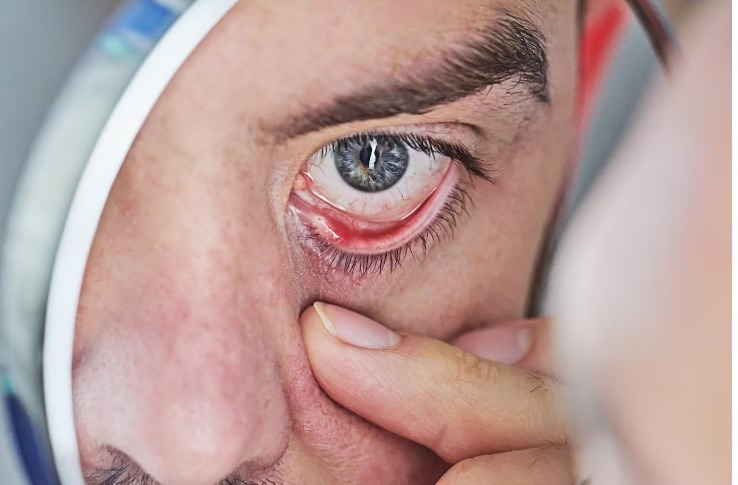
Glaucoma
Glaucoma A Dangerous Eye Disease That Can Lead to Vision Loss
Glaucomais a group of eye diseases caused by damage to the optic nerve (optic nerve) as a result of increased intraocular pressure. The optic nerve is the nerve that transmits visual information from the eye to the brain. If left untreated, glaucoma can lead to vision loss and ultimately blindness. Early diagnosis and treatment are critical to prevent vision loss due to glaucoma.
What is Glaucoma?
Glaucoma is a condition in which the intraocular pressure (intraocular pressure) rises as a result of an abnormal accumulation of fluid in the eye (due to excessive fluid production or poor drainage). High intraocular pressure damages the optic nerve and can lead to vision loss over time. Glaucoma is usually a painless and slowly progressive disease therefore, it is initially difficult to recognize. Regular eye examinations and early diagnosis are therefore important.
Types of Glaucoma
Glaucoma can be of different types, the most common being
- Open Angle Glaucoma (Primary Open Angle Glaucoma)
This is the most common type of glaucoma. The ducts that drain the intraocular fluid (aqueoushumor) become blocked over time, but there is no obvious blockage in the front of the eye. Patients often don't notice any symptoms, which is why this type of glaucoma is known as "hidden". Vision loss only becomes noticeable as the disease progresses. - Closed Angle Glaucoma (Open Angle Glaucoma)
In this type of glaucoma, the drainage of fluid inside the eye is blocked, but this leads to a rapid rise in intraocular pressure. Closed angle glaucoma usually presents with immediate symptoms such as sudden and severe headache, pain in the eye, blurred vision, nausea and vomiting. This condition requires urgent treatment. - Congenital Glaucoma
This is a congenital type of glaucoma and usually occurs in infants and young children. It can present with symptoms such as overgrowth of the eyes, sensitivity to light and watery eyes. If not treated early, it can lead to vision loss. - Normal Pressure Glaucoma (Normal Tension Glaucoma)
In this type of glaucoma, optic nerve damage occurs despite normal intraocular pressure. The exact cause of this condition is unknown, but weakness in the blood vessels or hypersensitivity of the optic nerve may be involved. - Pigmentary Glaucoma
In pigment glaucoma, pigment cells in the eye can enter the fluid drainage channel of the eye and cause blockage of the channels. This can lead to increased intraocular pressure and the development of glaucoma.
Glaucoma Symptoms
In the early stages of glaucoma, there are usually no obvious symptoms. However, as the disease progresses, some symptoms may appear. These include the following:
- Loss of vision: Loss of vision, especially edge vision (peripheral vision).
- Agri: Severe pain in the eye and head, especially with closed angle glaucoma.
- Blurred vision: Blurred vision, especially at night.
- Redness in the eye: Redness of the eye caused by dilated blood vessels.
- Photosensitivity: Hypersensitivity to light.
- Nausea and vomiting: In the case of closed angle glaucoma, it can be seen when the pressure in the eye rises.
Causes of Glaucoma
It is not known exactly why glaucoma occurs, but some factors may pose a risk:
- Genetic Predisposition: Glaucoma is more common in people with a family history of glaucoma.
- Age: People aged 40 and over have an increased risk of glaucoma.
- High intraocular pressure: High intraocular pressure is the most important risk for developing glaucoma.
- Other health problems: Some health conditions such as diabetes, heart disease and hypertension can increase the risk of glaucoma.
- Excessive myopia (near vision): Myopic patients have a higher risk of glaucoma.
- Eye injuries or surgical interventions: People with a history of eye injury or surgery may be at increased risk of developing glaucoma.
Glaucoma Treatment
Glaucoma treatment is based on controlling intraocular pressure. With early detection and appropriate treatment, vision loss can be prevented. Treatment methods may include:
- Medicines: The most common way to treat glaucoma is with eye drops. These drops are used to lower intraocular pressure. There may also be medicines taken by mouth.
- Laser Treatment: Laser therapy can be used to improve the flow of fluid inside the eye or to open the drainage channel. Laser therapy is usually used to treat open angle glaucoma.
- Surgical Intervention: Surgical intervention may be necessary in cases of glaucoma that cannot be controlled with laser treatment or medication. Surgery is performed to ensure that the intraocular fluid flows properly. This can be done by opening channels or creating a new drainage pathway.
Glaucoma and Vision Loss
When glaucoma is left untreated, vision loss may be inevitable. However, with early diagnosis and treatment, this loss can be prevented or delayed. Glaucoma usually does not affect central vision, but peripheral vision loss can occur and progress over time. If glaucoma is treated early, vision loss can be stopped or reversed.


Contact
We are at your service 24/7
Error: Contact form not found.
Patient Satisfaction
Beautiful thoughts from all of you
If you're looking for car insurance, we will help you to find the You bring emendous value to company. We have generated more leads in the last

Farhan Smith Health Mentor
If you're looking for car insurance, we will help you to find the You bring emendous value to company. We have generated more leads in the last

Elwin Dawson Medical Specialist
If you're looking for car insurance, we will help you to find the You bring emendous value to company. We have generated more leads in the last

Poral Dawson Home Nurse
If you're looking for car insurance, we will help you to find the You bring emendous value to company. We have generated more leads in the last


